Container Soils - Water Movement and Retention 8/26/21
Hello! This post has 3 pages. Houzz's format won't allow me to post the thread in it's entirety, so the thread will continue in the 2 text boxes subsequent to my OP. It's necessary to repost the thread from time to time because after a given number of replies, part 2 and/or 3 get archived and are difficult to find. I'll try to be better about reposting as soon as the number of posts reaches that point.
I want to thank all the growers and good people who have participated and been so supportive of the thread over the years. Their contributions are one of the main reasons viewers continue to find interest in it, so thank you very much! If you find value in the information I have set down in this post and feel there is anything pertaining to the topic that should be added or explored in more detail, please contribute your suggestions. My goal is to offer information that allows you to avoid an ongoing battle with your medium for control of your plants' vitality, information that will help you increase the reward you get in return for your efforts.
I started this thread about 15 years ago, in March of '05. So far, it has reached the maximum number of posts GW allowed to a single thread twenty two times, which is much more attention than I ever imagined it would garner. Currently, there have been just over 6,200 posts to the singular topic. I have reposted it in no small part because it has been great fun, and a wonderful catalyst in the forging of new friendships and in increasing my list of acquaintances with similar growing interests. The forum and email exchanges that so often stem from the subject matter are in themselves enough to make me hope the subject continues to pique interest, and the exchanges provide helpful information. Most of the motivation to post this thread another time comes from the reinforcement of hundreds of participants over the years that strongly suggests the information provided in good-spirited collective exchange has made a significant difference in the quality of their growing experience. Thank you for taking the time to examine this topic - I hope that any/all who read it take at least something interesting and helpful from it. I know it's long, and grows a little longer each time it's reposted. My hope is that you find it worth the read, and the time you invest results in a significantly improved growing experience. Since there are many questions about soils appropriate for use in containers, I'll post basic mix recipes later, in case any would like to try them. Also, you will find I use the terms medium/ media and soil/ soils interchangeably.
As you eye the length of this post, one thing you might ask yourself is, "Why the interest and all this talk about soils and water retention?" In all honesty, soils obscure the reason we talk about them - they hide the roots and the roots' state of vitality. Vitality is not the same as vigor. Vigor is a genetic factor, something the plant is endowed with because of how it was programmed by Mother Nature. It is also something we have no sway over. Vitality, on the other hand, is dynamic and variable, essentially a measure of how well a plant is/ has been able to deal with the cultural hand it has been dealt by the grower. Vitality is something you have much, perhaps nearly total control over. The visual signals we get from the parts of the plant we CAN see allow us to take measure of the condition of the roots and the plant's overall vitality. Soil choice and watering habits, have a very significant impact on root health. As you read, keep in mind that good root health and root function are an essential PREREQUISITE to a healthy plant. We cannot expect to grow healthy plants w/o a healthy root system - it is impossible; which brings us full circle to why we discuss soils.
Poor root health is responsible for a very high percentage of the ills that befall plants, and the reasons people flock to the forums seeking remediation for widely varying issues. Poor root health means a reduction in vitality, which leaves the plant looking shabby while compromising its ability to defend itself against insects and diseases. So, let's talk about some things we can implement that should go a very long way toward providing you with the ability to consistently keep the root systems of your plants happy.
Before we get started, I'd like to mention that I wrote a reply and posted it to a thread some time ago, and I think it is well worth considering. It not only sets a minimum standard for what constitutes a 'GOOD' container medium, but also points to the fact that not all growers look at container media from the same perspective, which is why growers so often disagree on what makes a medium 'good, bad, or somewhere in between. I hope you find it thought provoking:
IS 'X' A GOOD SOIL?
I think any discussion on this topic must largely center around the word "GOOD", and we can broaden the term 'good' so it also includes 'quality' or 'suitable', as in "Is X a quality or suitable medium?" How do we determine if medium A or medium B is a good one? And before we do that, we had better decide if we are going to look at it from the plant's perspective or from the grower's perspective, because often there is a considerable amount of conflict to be found in the overlap - so much so that one can often be mutually exclusive of the other.
We can imagine that grower A might not be happy or satisfied unless knows he is squeezing every bit of potential from his plants, and grower Z might not be happy or content unless he can water his plants before leaving on a 2-week jaunt and still have a weeks worth of not-having-to-water when (s)he returns. Everyone else is somewhere between A and Z; with B, D, F, H, J, L, N, P, R, T, V, X, and Y either unaware of how much difference medium choice can make, or, they understand but don't care.
I said all that to illustrate the large measure of futility in trying to establish any sort of standard as to what makes a medium 'good' from the individual grower's perspective; but let's change our focus from the pointless to the possible. We're really only interested in the comparative degrees of 'good' and 'better' here. It would be presumptive to label any medium "best", though 'best I've found' or 'best I've used' CAN sometimes be useful for comparative purposes, but that's a very subjective judgment. Let's tackle 'good', then move on to 'better', and finally see what we can do about qualifying these descriptors so they can apply to all growers.
I would like to think that everyone would prefer to use a medium that can be described as 'good' from the plant's perspective. How do we determine what a plant wants? Surprisingly, we can use %s established by truly scientific studies that are widely accepted in the greenhouse and nursery trades to determine if a medium is good or not good - from the plant's perspective, that is. Rather than use confusing numbers that mean nothing to the hobby grower, I can suggest that our standard for a good should be, at a minimum, that you can water properly. This means at any time during the growth cycle you should be able to water your plantings to beyond the point of saturation (so excess water is draining from the pot) without the fear of root rot or compromised root function due to (take your pick) an excessive volume of water or too little air in the root zone.
I think it is very reasonable to withhold the comparative adjective, 'GOOD', from media that can't be watered properly without compromising root function, or worse, suffering disease from one of the fungaluglies that cause root rot. I also think anyone wishing to make a case from the plant's perspective that a medium which can't be watered to beyond saturation w/o compromising root health can be called 'good', is fighting uphill against logic.
So I contend that 'GOOD' soils are those we can water correctly; that is to say, we can flush the medium when we water without concern we would be compromising root health/function due to long term retention of excess water. If you ask yourself, "Can I water correctly if I use this medium?" and the answer is 'NO' .... it's not a good choice .... for the reasons stated above. Can you water correctly using most of the bagged bagged potting media readily available? 'NO', not without work-arounds in place, and we can talk about those.
What about 'BETTER'? Can we determine what might make a better medium? Yes, we can. If we start with a medium which meets the minimum standard of 'good', and improve either the physical or chemical properties of it, or make it last longer structurally, then we have 'better'. Even if we cannot agree on how low we wish to set the bar for what constitutes 'good', we should be able to agree any medium that reduces excess water retention and increases aeration ensures better potential for optimal root health than media which only meet some one's individual and arbitrary standard of 'good'.
All the plants we grow, unless grown from seed, have the genetic potential to become beautiful specimens. It's easy to see the absolute truth in the idea that if you give a plant everything it needs to prosper it will flourish. The better we are at it, the better our plants will grow. But we all know it's not that easy. Lifetimes are spent in careful study, trying to determine just exactly what it is that plants want and need to make them grow best.
Since this is a discussion, let's examine what the plant wants from its soil. It wants a soil in which we have endeavored to provide in available form, all the essential nutrients, in the ratio in at which the plant uses them, at a concentration high enough to prevent deficiencies yet low enough to make it easy to take up water (and the nutrients dissolved in the water). First and foremost, though, the plant wants a container medium that is evenly damp, never wet or soggy. Giving a plant what it wants to flourish and grow doesn't include a medium half saturated for a week before aeration returns to the entire mass, even if we only water in small sips. Plants might do 'ok' in some water-retentive soils if the grower is highly skilled, but in order to actually flourish as plants are genetically programmed to do, they would need to be unencumbered by media which do not remain wet/ soggy for extended periods.
What defines our proficiency as growers is our ability to identify and reduce the effects of limiting factors, or by eliminating those limiting factors entirely; in other words, by addressing those influences inhibiting the plant from reaching its genetic potential. Even if we are able to provide every other factor that influences plant growth/ vitality perfectly, it could not make up for a substandard medium. For a plant to realize its full genetic potential, every factor has to be perfect, including the medium. Of course, we'll never manage to get to that point, but the good news is, as we get closer and closer, our plants get better and better; and almost certainly, we'll find our growing experience more rewarding.
In my travels, I've discovered it almost always ends up being that one little factor that we willingly or unwittingly overlooked that limits us in our abilities, and our plants in their potential. Mother nature always sides with the hidden flaw.
Food for thought:
A 2-bit plant in a $10 has a future full of potential, where a $10 plant in a 2-bit has only a future filled with limitations. ~ Al
CONTAINER MEDIA – and WATER RETENTION
This is where we get to the meat of the subject. As container gardeners, our first priority should be to ensure the media we use provide adequate aeration for the intended life of the planting, or in the case of perennial material (trees, shrubs, garden perennials), from repot to repot. Aeration/drainage is arguably the most important consideration in any container planting. The soil is the foundation all container plantings are built on, and aeration is the very cornerstone of that foundation. Since aeration and drainage are inversely linked to soil particle size, it makes good sense to try to find and use (or make, in the case of 'media/ soils') soils or primary components with particles larger than peat/ compost/ coir/sand/ top or other traditionally 'fine' ingredients.. Durability and stability of soil components so they contribute to the retention of soil structure for extended periods is also extremely important. Pine and some other types of conifer bark fit the bill nicely, but I'll talk more about various components later.
What I will write will also hit heavily against the futility in using a “drainage layer” of coarse materials in attempt to improve drainage. It just doesn't work. All drainage layers do is reduce the total volume of medium available for root colonization. A wick can be employed to remove water from the saturated layer of medium at the container bottom, but a drainage layer is not effective. A wick can be made to work in reverse of 'self-watering' pots.
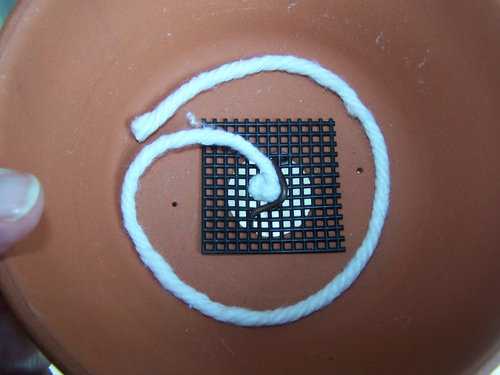
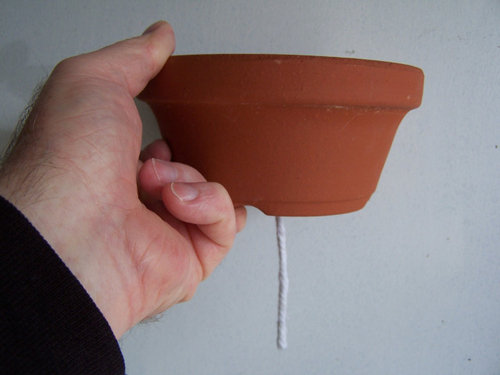
CONSIDER THIS IF YOU WILL:
If we agree we should avoid ingredients that are phytotoxic (toxic to plants) our primary consideration when building/buying a container medium should be the medium's structure and its structural stability. Size of the particles that make up a medium, the ratio at which they are combined, and the long term durability (resistance to breaking down into smaller and smaller particles) plays a primary role in determining whether a medium is suited or unsuited to the application. The medium fills only a few needs in container culture. Among them are: Anchorage - a place for roots to extend, securing the plant and preventing it from toppling. Nutrient Retention - it must retain a nutrient supply in available form sufficient to sustain plant systems. Gas Exchange - it must be amply porous to allow air to move through the root system and gasses, which are a by-product of decomposition, to escape. Water - it must retain water enough in liquid and/or vapor form to sustain plants between waterings. Air - it must contain a volume of air sufficient to ensure that root function/metabolism/growth is not impaired. This is extremely important and the primary reason that heavy, water-retentive media are so limiting. Most plants can be grown without soil as long as we can provide air, nutrients, and water, (witness hydroponics). Here, I will concentrate primarily on the movement/ retention of water in container media.
There are two forces that cause water to remain in or move through soils – one is gravity, the other capillary action. Gravity needs little explanation because all things are pulled toward the center of the earth. For this writing I would like to note: Capillarity is a function of the natural forces of adhesion and cohesion. Adhesion is water's tendency to stick to solid objects like particles and the sides of the pot; it is the reason water can stick to the inside of your vertical shower door. Cohesion is the tendency for water to stick to itself. Cohesion is why we often find water in droplet form – because cohesion is at times stronger than adhesion; in other words, water's bond to itself can be stronger than the bond to the object it might be in contact with. Capillary action is adhesion + cohesion, forces in evidence when we dip a paper towel in water. The water will soak into the towel and rise several inches above the surface of the water. It will not drain back into the source, and it will stop rising when the force of gravity is equal to the capillary attraction of the fibers in the paper.
There will be a naturally occurring "perched water table" (PWT), also referred to as a 'perched water column' in containers when soil particle size is under about .100 (a little smaller than 1/8) inch. It is created whenever the capillary pull of the medium (remember how the water climbed up the paper towel and defied gravity) surpasses the Gravitational Flow Potential GFP (weight of the water column in the pot); therefore, the water does not drain, it is said to be 'perched'. The smaller the size of the particles in a medium, the more surface area there is for water to 'stick to', so the greater the capillarity and the greater the height of the PWT. Perched water can be tightly held in heavy (comprised of small particles) soils where it perches (think of a bird on a perch) just above the container bottom where it will not drain; or, it can perch in a layer of heavy medium on top of a coarse drainage layer, where again it will not drain. It is water that resists gravity whenever the force of capillarity is stronger (when particle size is too small) and will not allow the PW to drain from the portion of the pot it occupies. It can evaporate or be used by the plant, but ambient physical forces will not allow it to drain naturally.
Imagine we have five cylinders of varying heights, shapes, and diameters, each with drain holes. If we fill them all with the same medium mixture, then saturate the medium, the PWT will be exactly the same height in all the containers.
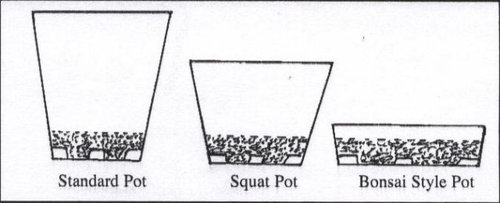
This saturated area of the container is where roots initially seldom penetrate and where root problems frequently begin due to a lack of aeration and the production of noxious gasses which cannot escape waterlogged media. Water and nutrient uptake are also compromised by lack of air in the rhizosphere (root zone). Keeping in mind the fact that the PWT height is dependent on soil particle size and has nothing to do with height or shape of the container, we can draw the conclusion that: If using a medium that supports perched water, taller growing containers will always have a higher percentage of unsaturated than squat containers when using the same medium. The reason: The level of the PWT will be the same in each container, with the taller container providing more usable, air holding above the PWT. From this, we could make a good case that taller containers are easier to grow in.
~ continued in the text box below ~
Comments (100)
Seth
last yearHi Al,
Last year you responded to someone's question about repotting their Fiddle Leaf Fig with some great information, here's the link - https://www.houzz.com/discussions/6025060/need-help-with-repot-of-fiddle-leaf-fig#n=9
So you don't need to repeat anything you stated there, can you confirm that in fact gritty mix is perfectly fine used in any situation you would otherwise recommend the 5:1:1?
I've had a Ficus (Weeping Fig) for years that hasn't taken off even receiving plenty of indirect light, flushing of salts, and weekly watering. It's been in gritty mix with a fabric air pot. I was considering transferring to a larger ceramic pot with it's roots in the gritty mix but using 5:1:1 around it to see if that helps.
Speaking of which. I'll be planting a few dozen bare root shrubs (Serviceberry) outdoors in the next few weeks. Can you see an advantage of using a gritty mix if I keep the hole small considering they're bare root trees?
You should have a donation site for "buy me a coffee" for all the help you give! thanks!
tapla (mid-Michigan, USDA z5b-6a)
Original Authorlast yearRose - Perlite is not internally porous in that there is no way air or water vapor can enter perlite's closed cells, which hold the same gasses they held when the perlite was first vitrified. That's why aeration decreases on a per/volume basis when perlite is added to fine material. It's impossible for perlite to provide as much aeration as it displaces because perlite's rough surface is the only part that can create aeration, and it can only be a small fraction of the air in the material it displaces.
Perlite is more effective in bark-based media than in media based on fine materials like peat, coir, compost, sand, composted forest products, ..... . The reason is, a particle of perlite in fine material like I listed will be surrounded by that fine material, providing less aeration than in the medium it displaces; in bark, perlite gets wedged between flat pieces of bark, creating very large air pocket. Lay a playing card on a table so it covers a piece of perlite and notice how much space is created between the table and the card. It is many, many times more than the volume of perlite, perhaps as much as 100x. It's still essential though, if you want to take advantage of all that aeration, you don't shoot yourself in the foot by adding too much fine material. If there are enough fines to fill the large spaces created by the perlite, there is no sense in looking for bark.
Four - Thanks for thinking of us and providing the images!
Josh - heterogeneity isn't necessarily a plus. In fact, it's possible to have less air space in a mixture of particle sizes/shapes than it is in a medium that has a smaller particle size than the average (particle size) of the mixture, if the smaller particles are uniform in size and shape.
You might have some success growing in pine bark only, but don't forget to add the dolomite - CaMg(CO3)2 to bring the pH up to something that better favors the average plant. Once you get a plant to establish in a medium, the roots actually become part of the soil structure. I've seen ficus trees that have been kept in the same container so long that almost all the soil has gassed off and I could look into the pot and see the bottom in places. That's aeration!
As I mentioned to Rose, anything gritty (and not phytotoxic) will work as well as perlite in the 5:1:1 mix. Seramis would work, as would granite chips or formaldehyde foam beads of an appropriate size. I don't know what the parboiled rice hull situation is in France, but that could be pressed into service as a replacement for peat and or perlite when used with pine bark.
Seth asks: ..... can you confirm that in fact gritty mix is perfectly fine used in any situation you would otherwise recommend the 5:1:1? I think the gritty mix might be overkill for 1) plantings of annuals, 2) veggies other than perennial plantings, 3) naturally vigorous plants with root systems that grow so quickly they require repotting annually to keep them in top shape (hibiscus, datura, brugmansia, others. IOW, if they aren't going to be in the same soil for more than a year, and they aren't something special (sentimental value, expensive, hate wet feet), (my thought is) they can be grown in the 5:1:1 mix with little or no conspicuous difference in growth rate or vitality levels.
I grow all my woody material and all succulents in the gritty mix, which is pretty much all I grow any more. The gritty mix might also excel at keeping plants in shallow pots healthy.

If these pots are 12, 8, and 4" deep, and the soil in the pot supports 3" of perched water, the tall pot has 75% of the soil free of perched water at container capacity (see below), while the pot on the right has only 25%, and that's a problem.
I was considering transferring to a larger ceramic pot with it's roots in the gritty mix but using 5:1:1 around it to see if that helps. When you mix soil textures in the same container, it's difficult to keep the soil appropriately moist. Part of the soil column can be too dry while the rest might be too wet.
I counted the number of Ficus I have in pots and came up with 45, not counting the propagules I start out of compulsion. They are all in the gritty mix and all doing very well. I think we could figure out what's wrong if you want to try. I know for sure it's hard to beat a properly made gritty mix for woody plants.
Can you see an advantage of using a gritty mix if I keep the hole small considering they're bare root trees? None - I would try to talk you out of it unless your soil is sand or sandy loam, then it won't matter as much. Anything else will collect water in the large spaces between the gritty mix particles. It's best to use native soil to backfill the planting hole. If the bare-root plants are really small, you might grow them out in a flat or individual containers for a year so you can plant out in early spring while they are still dormant - or, you could plant out this fall. Just try to avoid planting out in full sun, even if the plants are still dormant, especially if it is already hot where you live. We've been in the upper 70s and 80s all week. Don't know about where you live, but it's a consideration.
BTW - thanks for the kind words.
Al
Related Discussions
Container Soils - Water Movement & Retention VI
Q
Comments (152)4-6 lbs of dolomite will generally raise the pH of 1 yard of media by 0.5 - 1.0 point. 16 (fl) oz of dolomite weighs about 1 lb, so we can use ounces interchangeably (fluid vs weight) for lime. Bark/peat soils usually come in at an unlimed pH of 4.0 - 5.0, so we want to raise them about >1.0 point. There are 80 oz in 5 lbs of lime, or 160 tbsp, which will raise the pH of a yard (202 gallons) of soil about 1 point. The big batch is about 35 gallons (4.5 cu ft) or 1/6 of a yard. We need 1/6 of 160 tbsp or 27 tbsp to raise the pH about 1 point. There are 16 tbsp in a cup, so 27 tbsp is 1.7 cups. Since we need to raise the pH more than 1 point, we round the 1.7 cups up 0.3 cups to 2.0 cups. The change comes as a result of realizing that supplying a single cup of lime might not have raised pH high enough. This can ensure that Ca remains reactive and relatively unavailable instead of (in the case of adding more dolomite) residual and exchangeable. Al...See MoreContainer Soils - Water Movement & Retention X
Q
Comments (153)Not at all, and I don't remember writing anything that should leave anyone with that impression. If I had to identify the crux of the thread, it would be that to take advantage of highly aerated media and their sharp drainage, it's essential to start with a very large volume of coarse ingredients, and there should never be enough fine material to fill all the spaces between the large particles. When you add a marble/perlite) to a jar filled to the rim with sand or peat), aeration of the medium in the jar DECREASES, and continues to decrease as you add more marbles/perlite. It is only when you have added a volume of marbles/perlite) so large there is not enough sand/peat) to fill all the desirable pores between the large particles that aeration begins to INCREASE. This is called the "threshold proportion". Al...See MoreContainer Soils - Water Movement & Retention XV
Q
Comments (155)Hi, rina. I know wood chips are different than bark, but I saw a nursery that was using these mixed with some alder saw dust. In about a year it turned to this incredible black, rich "soil". The guy as the nursery said it breaks down better and more nutritious for the soil and depletes less nitrogen in the process. The wood chips I was seeking are about the size of medium bark in nurseries. In retrospect, I am glad I didn't try that. Works great outdoors, not sure about containers! The black bark is essentially composted evergreen tree bark. I say evergreen because it could be a mix of a number of different types here in the Pacific NW --- hemlock, fir, ceder, spruce, etc. I didn't screen it, it seemed plenty loose initially; small to medium size in comparison to bagged nursery store bark. It would have been o.k. had I added the peat and perlite per the formulas given here. Screening would have left just the larger pieces, but that would be quite a chore for the volume I was using! I repotted some of the plants using the 5:1:1 formula with my black bark and those are doing much, much, better. A gardening friend said "Think of it...bark is like big saw dust. If you pack it down it gets as hard as a board". That is essentially what happened when I used the black bark alone without the the perlite and moss. ;(...See MoreContainer Soils - Water Movement and Retention XI
Q
Comments (150)Hi Al, With all the ingredients in hand, I've started the sifting process and had a few questions. I'm trying to swap out 50 containers worth of soil so I'd prefer to do this in the most efficient way. I am using a 9x9 hardware cloth (.088" openings) to filter the fines. Here are the three ingredients I was able to source: 1) Shasta: Orchid Fir Bark: (1/8" - 1/4") http://shastabark.com/products.htm 2) Turface MVP 3) 1/8" Crushed Granite (Desert Gold) http://www.lyngsogarden.com/index.cfm?event=Display.Home.Product.Group&homeCategory=STONE&categoryid=1094&productgroup=PEBCOB&groupname=Pebbles%252C%2520Cobbles%2520%2526%2520%2520Colored%2520Gravel Questions: 1) It seems like it takes a decent amount of time to screen out the fines for one container. I also have constructed two other screens to be used to filter out the larger particles (a 1/4" for the large fir bark and a 9x9 (.1387") for the larger turface/granite). I'm assuming that at the end of the day it is more important to screen out the fines then to screen out the few larger pieces which may be in the mix. Would this be correct? I'm just trying to save some time and there doesn't seem to be that many larger pieces in the mixes. 2) Do you usually rinse out the mixes before you combine them? Does this help get additional dust/fines out? 3) What do you do with all the fines/dust that you sift out? If you are screening out larger pieces what do you with them? Thanks so much in advance. Your advice and guidance have been invaluable. Best, Kernul1...See Morechamaegardener (Z5) Northeast Illinois
last yearlast modified: last yearAl, I have a few technical questions about the 5-1-1 mix.
First, why is it ok to use pine bark dust in the 5-1-1 mix when the 1-1-1 gritty mix uses screened pine bark to ensure separation of the components to allow air in the root zone? I see up thread you said the dust was alowable so watering could take place every 4-6 days instead of everyday. I get that, but why doesn't the 5-1-1 mix with pine dust create the same perched water table that is addressed by the screened components in 1-1-1?
Also, comparing the 5-1-1 components to 1-1-1, does the perlite perform the same function as chicken grit? Is perlite used as a less expensive compromise to chicken grit? And what do the small peat particles provide? More water retention? Less water retention due to difficulty rewetting peat? Since the pine dust and smaller fines retain water already, what does peat add to that?
Finally, would a 5-1-1 mix using screened pine bark, Turface and chicken grit perform the same as using pine fines, perlite and peat for 5-1-1? Better due to air space in the root zone? Better or worse than 1-1-1 (aside from the greater amount of organic material breaking down)?tapla (mid-Michigan, USDA z5b-6a) thanked chamaegardener (Z5) Northeast Illinoistapla (mid-Michigan, USDA z5b-6a)
Original Authorlast year..... why is it ok to use pine bark dust in the 5-1-1 mix when the 1-1-1 gritty mix uses screened pine bark to ensure separation of the components to allow air in the root zone? I see up thread you said the dust was alowable so watering could take place every 4-6 days instead of everyday. About 20 years ago when I joined GW, I was in search of information re grow media I could use for bonsai in shallow pots. There was no one here using a mix that was made of predominantly, much less all, particles larger than about 1/10". Everyone (at least seemingly) was using media based on peat and either living with excess water retention or employing work-arounds that promoted a build-up of dissolved solids (salts) in media.
Fast forward a couple of years to a point in time when I had pieced together information that yielded a understanding of PWTs and how particle size primarily drives water retention. Since I then had the same desire to share information I think is helpful that I still have today, I was anxious to share what turned my growing experience around almost completely. Selling (figuratively) the gritty mix was no easy thing. Conventional thinking was such that, if a soil wasn't rich and black it would never provide a suitable home for roots. Compost, when available, was most favored by many as the primary ingredient in their grow media; and, relating successes using the gritty mix largely fell on deaf ears.
Then, same as now, I realized the gritty mix was more expensive and more of a chore to make, so I wanted an alternative to the gritty mix, something less expensive I could mix up inside of a few minutes and use for all my veggies and mixed display containers scattered through the gardens and decks. Putting the same concept to work, I came up with the 5:1:1 mix, which does support a PWT, but the ht of the PWT is nowhere near the height of the PWT in commercially prepared media, which commonly ranges from 4-6+ ".
The 5:1:1 mix eventually came to be viewed as a legitimate grow medium and its use continued to grow. I think it would be much more popular if the bark which servers as its base ingredient hadn't become more difficult to find. Milled yellow pine bark, a by-product of the treated lumber industry, is now commonly sold in bulk to industrial operations who super heat it and burn the gasses produced to drive steam processes for the manufacturing sector.
When I first started talking about the gritty and 5:1:1 mix, people were used to watering intervals measured in weeks, and few were interested in using a mix that required watering every 3-6 days. There is still a tendency to hold to the idea that these overly long watering intervals are the norm which other media should be judged against. I try to be clear in laying out the idea that there is a tax to be paid on these long intervals, and it comes in the form of lost potential in terms of growth rate, vitality levels, eye appeal, and yields when that is a factor.
..... why doesn't the 5-1-1 mix with pine dust create the same perched water table that is addressed by the screened [gritty mix]? It does; however, most of us are willing to make some degree of compromise when it comes to comparative degrees of 'good'. The 5:1:1 mix is meant to be far better than most commercially prepared media, it's far less expensive on a per volume basis; and, while it might not have the same potential the gritty mix has, it provides a viable choice that offers more potential than most commercially prepared mixes while freeing those unwilling or unable to make the gritty mix from the additional expense and effort.
Also, comparing the 5-1-1 components to 1-1-1, does the perlite perform the same function as chicken grit? Not really. In the gritty mix, the grit is included almost exclusively as a way to adjust the medium's ability to hold water. As you've read, the 'formula' I usually suggest is to keep the bark fraction of the gritty mix at no more tham 1/3 of the o/a volume, and vary the ratio of Turface and grit to adjust water retention.
Less Water:
4 grit
3 bark
2 Turface
More water:
4 Turface
3 bark
2 grit
In the 5:1:1 mix, the perlite particles work somewhat uniquely. They get wedged between flat plates of pine bark, where even a small particle of perlite can create a very large pore space. Wedge a marble between 2 sheets of plywood and use your mind's eye to envision the size of the air space. You can 'see' that a little perlite can really open up a milled bark-based medium. Is perlite used as a less expensive compromise to chicken grit? They both have their functions and in some cases could be used interchangeably if the perlite is screened. And what do the small peat particles provide? More water retention? Less water retention due to difficulty rewetting peat? Since the pine dust and smaller fines retain water already, what does peat add to that? Because the perlite really opens the medium up, there is generally not enough fine material in a bag of bark to provide the kind of water retention people are willing to deal with. The peat should be used as a way to adjust water retention. Remember, the recipes are no ore than a starting point. Ideally, readers will understand the concept well enough that, with a little time, what's required becomes self evident ....... like our grandmothers made bread.
Al
chamaegardener (Z5) Northeast Illinois
last yearThank you Al. Having no experience, I decided to pretty much adopt your formulas without question. Then, as I have started using them, I get these questions. I appreciate you expanding our knowledge base.
tapla (mid-Michigan, USDA z5b-6a) thanked chamaegardener (Z5) Northeast Illinoisfour (9B near 9A)
last yearAl, in your reply, the first section ("About 20 years ago.... when that is a factor.") provides a perspective that pulled together some loose ends in my mind.
tapla (mid-Michigan, USDA z5b-6a) thanked four (9B near 9A)JodiK
last yearAl, I'm still using every bit of the knowledge you shared with everyone, beginning long ago, regarding container growing and mediums, and I continue to share that knowledge as far and as wide as I can! You have made me into a better gardener than I ever thought I'd be! Again, my thanks to you! I so appreciate your generosity in sharing your own knowledge so freely, and being so helpful and patient in answering questions! I know I'm not the only person to have gained from your shared experience... I see others who are adopting the same or similar methods. It's all so logical... just a bit of basic physics, a little science, and an understanding that growing in a confined space is very unlike growing in a garden setting where Mother Nature gives so much help that can't be accurately duplicated in a pot. And when I think about it, why would the gardening industry be different than any other? They exist to profit... not to help us save money or our plants! So, again... my heartfelt thanks for opening my mind to ideas that have given me so much in the way of joy where my potted plants are concerned! I hope all is well with you and yours. If you'd like a glimpse into my life with goats and other aspects of our organic lifestyle, and my plants, check us out on youtube at Rode Hawg Kennel. My newest project is trying to turn a Chalice Vine into a bit of a bonsai or topiary, if possible, through pruning and using other ideas you've either taught, or I have put together using information I've gleaned from you! Take Care! And as always... Happy Gardening!
tapla (mid-Michigan, USDA z5b-6a) thanked JodiKJanson McCreery
last year@tapla (mid-Michigan, USDA z5b-6a) I have been a long time reader of your posts and wanted to let you know how much of a help that you have been for me. What started as a simple google search of how to care for a ficus tree turned into many late evenings of me reading your posts. I imagine there are lots of people like me who arent very active on the forums. Your knowledge sharing has been incredible. I hope you are doing well. Thanks for everything.
tapla (mid-Michigan, USDA z5b-6a) thanked Janson McCreerytapla (mid-Michigan, USDA z5b-6a)
Original Authorlast yearThank you, Jodi. I must have missed notification you'd posted here. I appreciate the kind words and the update. I hope all's well on the farm!
Janson ...... I appreciate you taking the time to express your kind thoughts. We all truly enjoy being able to think we've done something to help someone else get more from their growing experience! Glad to know you're around - hope to see more of you. Don't forget, you can ask questions!Al
westes Zone 9b California SF Bay
last yearlast modified: last year@tapla (mid-Michigan, USDA z5b-6a) I also learned tremendous amounts about structured soil from reading your posts. I have created new soil mixes and now have instrumentation and methods to determine the suitability of the soil for a container, thanks to the journey that was started here.
I do wish you would host a Zoom meeting - maybe once a month - and charge people some money for that to make it worth an hour of your time once a month. That would give people a chance to ask you open-ended soil and garden questions, without imposing on your time. Even if you don't need the money, charging money solves a lot of problems with infinite numbers of people asking endless numbers of questions.
tapla (mid-Michigan, USDA z5b-6a) thanked westes Zone 9b California SF BaySam Chancey
last yearAl, I want to thank U for making me a much better gardener. I hope U don't mind as I try to spread your knowledge of what I have learned & practised for probbally 10 years or better. I read about your 5-1-1 on a garden forum & never looked back. I 99% garden with containers. If I was around U one of the first questions I would ask is how much Foliage pro would U use in a five gallon bucket, as I make up 2- 5 gallons at a time & pull it around on a wagon as I dip it out. How much of the mixture would U pour in a 10 gal container? I could ask U a lot more, but I really thank U again. Sam Chancey
tapla (mid-Michigan, USDA z5b-6a) thanked Sam Chanceytapla (mid-Michigan, USDA z5b-6a)
Original Authorlast yearThank you both (Westes/ Sam) for your kind thoughts. No immediate plans to do anything additional in the way of videos or zoom, but you never know. It feels good to hear that I've made a difference in how much others get from their growing experience, so thanks too for making the effort to say as much.
Sam - I fertilize just as I water. No matter the concentration of fertilizer in the solution, I keep adding the solution to the container until it starts to come out of the drain hole, only difference being is I stop as soon as the solution exits the pot rather than waiting until about 20% of the total volume of water applied exits the drain hole, flushing the soil and carrying any build-up of dissolved solids out with the waste water. When we are using fast-draining media, water doesn't travel much horizontally in the soil column, so it's important to use a rose on a watering can or a spout that restricts outflow from the can.
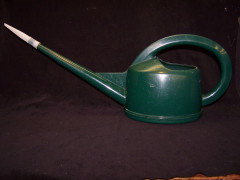
This allows you to cover the entire surface evenly so when the water moves almost straight down the entire soil column gets wet.
Al
chamaegardener (Z5) Northeast Illinois
last yearlast modified: last yearAl,
Being part way through my first season using both the gritty mix and 5-1-1, I have a couple of observations. First, it seems the conifers I re-potted this March in the gritty mix did not perform as well as those I put in the 5-1-1 mix. I did not see much new growth for those in the gritty mix, and had some go backwards with dieback (4ever goldie arborvitae) and death (yew). My other 4ever goldie arborvitae in the 5-1-1 looks incredibly bright and healthy.
On the other hand, the deciduous trees performed a little better as far as new growth in the gritty mix but also did ok in the 5-1-1. These include several japanese maples.
I also tried hostas in both mixes and both did well. In the case of the Hostas, I did compromise on the gritty mix by allowing smaller screened turface particles, figuring hostas like a moist environment.
Just wondering if this indicates I did something wrong, or if it is just the nature of nature to have different preferences?
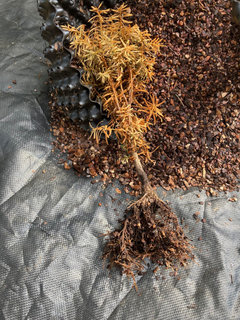
tapla (mid-Michigan, USDA z5b-6a)
Original Authorlast yearI have yews (3) and arborvitae (about a dozen because the cultivar I have [Thuja occidentalis 'Zmatlik'] is uncommon, so I like to share them), all in the gritty mix and they do great. Try to not completely bare root the conifers, and when you root prune them, chop up some of the fine roots + a little of the old soil and mix them into the fresh soil where they will serve as a beneficial fungi innoculant. That's not why your plant died, but it does help for spring repots while temps are cool. What type of post repot (after) care did the plants get?
Al
chamaegardener (Z5) Northeast Illinois
last yearAfter repotting, I watered without any fertilizer for about a week, then used Foliagepro 9-3-6 at a rate of 1 teaspoon per gallon with each watering for the next month. I then switched to 4 teaspoons per 2 1/2 gallon watering can once a week, with other waterings not having any fertilizer.
tapla (mid-Michigan, USDA z5b-6a)
Original Authorlast yearlast modified: last yearA 1 tsp/gal solution is a very high rate if you're fertilizing at every watering. 1/4 tsp is about right for '@ every watering' fertigation. 4 tsp/2.5 gal/wk is on the high side, but that's what I use when plants are actively growing. Were the plants that died outdoors? Full sun?
Al
chamaegardener (Z5) Northeast Illinois
last yearThe highest concentration was 4 teaspoons per 2 1/2 gallon watering can, not 4 teaspoons per gallon. These were the rates for all the potted plants, not just the one that died.
The potted plants are all outdoors. As to full sun, I started the yew on the south side of our house which receives sun from arounf 10am to 5pm. Around a month ago I moved it back onto our patio, which gets sun from around 12:30pm to 4:30pm. So maybe it was mad about that?
Here is my 4ever Goldie in 5-1-1 today 9/4/2022: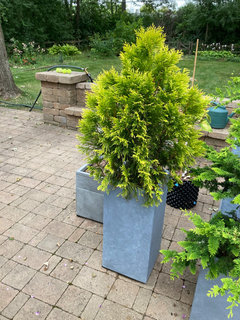
Here is my 4ever Goldie in gritty mix today 9/4/2022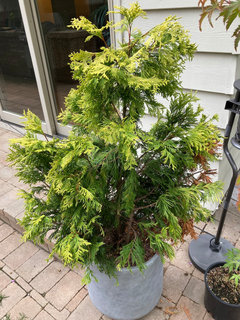
This had started much fuller at the beginning of the season, 3/5/2022 just before repot: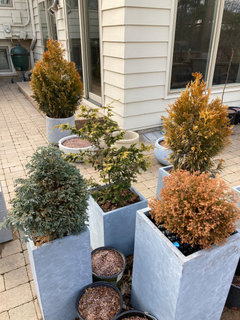
tapla (mid-Michigan, USDA z5b-6a)
Original Authorlast yearI meant 4 tsp/2.5 gal - just forgot to add the '2.5' part. I edited it to reflect that. My bad.
Around a month ago I moved it back onto our patio, which gets sun from around 12:30pm to 4:30pm. So maybe it was mad about that? Improbable.
I'm assuming, from our conversations that you were careful about how you made the mix and screened the ingredients. And since I have grown pines, junipers, yews, cypress, false cypress, hemlock, eastern white cedar, fir, spruce, larch, and many other conifers with equally good results, I'm pretty certain it doesn't have anything to do with the plant/soil combination being incompatible. Even our weather and USDA zone are roughly the same.
I keep thinking that the 1 tsp/gallon/each watering is 4X the recommended rate, while 4 tsp/2.5 gal/wk is only 1.6X the recommended rate. That's a significant difference.
Al
chamaegardener (Z5) Northeast Illinois
last yearlast modified: last yearOn the other hand, this Japanese Larch Paper Lanterns is doing great, really vigorous after repot into gritty mix. Other j. maples too.
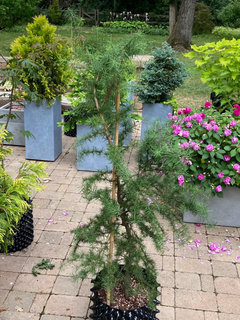 tapla (mid-Michigan, USDA z5b-6a) thanked chamaegardener (Z5) Northeast Illinois
tapla (mid-Michigan, USDA z5b-6a) thanked chamaegardener (Z5) Northeast Illinoiswestes Zone 9b California SF Bay
last year@tapla (mid-Michigan, USDA z5b-6a) I have also had problems with conifers dying after transplant. This is nothing specific to gritty mix, but the conifers seem to be very sensitive to how much soil mass you can remove from the roots when you transplant. Do you have any general rules - time of year included - for transplanting conifers to a new soil mix?
Jacques Frost
last yearlast modified: last yearHi @tapla (mid-Michigan, USDA z5b-6a) I've found your articles to be informative and interesting. This summer I put what I'd learned from them into action and despite the hot summer and working away had growth I've not seen before. If I'd had time to tend to my plants as I'd like I'm sure I'd have had a bumper crop top.
I do have a question or two if I may?:
Would biochar be a suitable substitute for perlite? I have access to a lot of it so it won't cost me anything.
Also I've become interested in organic plant nutrition and I've seen some fertilizer blends that use insect frass, seaweed meal, rockdust and the like to feed the plant gradually but it needs to be large containers to hold enough food in place for the plants and microbes to get at. Would these fine particles reduce the efficacy of your mixes?
With fertilizer leaching generally and water availability in summer being a problem I'm hoping this type of idea might be a solution to not running my water butts down (no run-off) as quickly. Also in the UK we keep hearing about fertilizer leaching from chemical fertilizers so two birds with one stone if I can work it out.
Thanks again for all your efforts.
Best regards,
Jacques.tapla (mid-Michigan, USDA z5b-6a)
Original Authorlast yearlast modified: last yearThank you Jacques. I appreciate the kind words.
Would biochar be a suitable substitute for perlite? Yes. perlite is most effective when it serves as ballast. That is to say when it is incorporated into the fraction of the soil below the maximum ht of the perched water table (PWT). Refer to fig. A below. These 'containers' are filled with grow medium and the shaded part of the soil column represents the maximum ht of the PWT after a thorough watering. The best use of perlite would be realized by including a healthy measure (like 65-75%) in that fraction of the soil where it serves as ballast. Within the PWT you'll find water and soil particles. Since the max ht of the PWT is a constant for any given medium in any given container, perlite particles displace both soil and water located within the ht of the PWT, as well as soil and air in the medium above the max ht of the PWT - just as the over-turned pot (fig. D) displaces soil and water below the level of the PWT as well as soil and air above the max ht of the PWT.
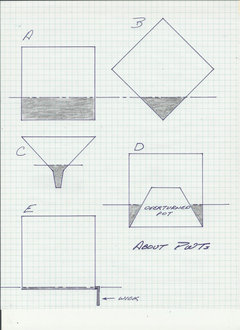
Like the pot and biochar, perlite actually decreases air porosity when added to medium in the hope it will INCREASE air porosity. You can see this in your mind's eye when you imagine a jar filled to the rim with sand. Perlite is not porous, so when you add a particle that displaces 1 unit of volume, 1 unit of sand and air will be displaced, so the o/a air porosity of the medium in the jar is decreased. This holds true when the medium is comprised of primarily small particles (peat, coir, compost, sand, composted forest products, etc.), but there is some saving grace when the perlite or biochar is used in conjunction with pine bark, which is usually in flat platelet-like shape. That is because a small particle of perlite or biochar wedged between 2 plat particles of bark can create a very large air pore. Think of 2 flat pieces of metal stacked like a sandwich. There is nearly 0 air space between the 2 pieces, but wedge a BB between them and the air space becomes very large. So the smaller are the particles making up the medium, the less effective perlite or biochar will be at creating air porosity. It reduces water retention, but doesn't do much to increase air porosity, with the exception being what I just noted.Also I've become interested in organic plant nutrition and I've seen some fertilizer blends that use insect frass, seaweed meal, rockdust and the like to feed the plant gradually but it needs to be large containers to hold enough food in place for the plants and microbes to get at. Would these fine particles reduce the efficacy of your mixes? The promise held by media like the 5:1:1 or gritty mix comes from the medias' physical attributes, their structure and ability to retain that structure for longer than it is wise to grow a planting w/o a repot to refresh the soil. So, How you fertilize doesn't change the efficacy of the medium, but it does impact on the grower's ability to get the most out of the media. This is because containers are generally not a welcoming place for stable populations of the living soil organisms required to break down the frass, seaweed, rock dust into a form the plant can actually absorb. That means you sacrifice a good deal of control over what/when your plants get (in terms of nutrients) and how much becomes available at one time. Soluble synthetics afford the grower complete control.
Plant's true food is sugar, and the plant makes that during photosynthesis. Nutrients are the building blocks plants use to grow and keep their systems orderly, and are taken up as salts. It doesn't matter to the plant whether the salts come from a dead fish, alfalfa meal, or a container of synthetic fertilizer. That said, we must always respect a grower's wish to follow a certain path, but there is no harm in trying to provide information that helps to make informed decisions.
Would these fine particles reduce the efficacy of your mixes? It depends. If you're using boiled rice hulls or horn meal as a source for N, it can be quite limiting, but suspensions of fish/ seaweed emulsion would have little or no impact on the gritty mix or 5:1:1 mix over the short term. Long term effect on the gritty mix would be inconsequential, but for the 5:1:1 mix it would hasten break-down of soil particles; however, as a planting ages and the entire soil column is colonized with roots, the roots actually become a part of the grow medium's structure, so the impact would still be minor. It's the meals and chunky organic stuff that can mess with air porosity and water retention.
Al
Seth
last yearHi, I try to limit my comments/questions until I’ve been able to do my homework. So I’ve made a list for when I eventually do want clarification for myself and hopefully others :)
For gritty mix I use foliage pro but I have a few questions regarding organic gardening.
BioChar - Your recent comment about biochar you mention using it as ballast (below the Max height of PW). Did I miss what benefit you felt it would provide or was this more advice to specifically not use it where roots might want to live? (I’ve recently heard skepticism regarding Biochar doing what people think it does. Specifically if it’s supposed to provide an environment to support microbial life why then is charred wood used to prohibit the decomposition process when burying a post in the ground). Disclaimer, I’m only here to learn!
You don’t overwater 20% solution out the bottom to reduce salts? - I thought in the past you did this (but for some reason thought it was 10%) but I just noticed you now say you stop once water exits. Was I wrong or is this new learned from your experience. I also try to water slowly across the entire top of my medium knowing the solution doesn’t travel much horizontally.
pH - I did a search for pH to make sure this wasn’t mentioned already (I did a search for ballast regarding my first question as well). I believe I read previously somewhere using gritty mix pH isn’t a major concern because the medium is intended to not retain(?) pH? I’m butchering my question. I’m sure pH of solution matters but since the gritty mix is so porous and inert the medium pH isn’t an issue? I would like to grow a Miracle Berry plant which prefers acidic soil. Do I need to modify my foliage pro solution?
Eggshells - (this isn’t for use in gritty mix, but I’m curious about gardening). you previous responded to a question of mine about eggshells. It was interesting to learn how little that amendment actually provides because it’s composition isn’t available to roots. I also recently started to compost using the Kobashi method involving lactobacillus bacteria which supposedly ‘pickles’ the compost making it more readily available for other bacteria to completely break it down. People are then able to compost bone, meat, citrus, onion, and maybe eggshells(?) when they otherwise would putrefy or be ignored in a worm farm. Do you know anything about this claim? My dog recently dug up some chicken bones and I was happy to see they were rubbery (although I think I’ll avoid bones and meat for that reason from now on). Maybe purification is all that’s avoided because the lactobacillus can work anatomically?
Nitrate/Nitrite - also not for gritty mix since I used Foliage Pro but I’ve recently upgraded my rain catchment system and realized the standing water undergoes the nitrogen cycle you see when created a “planted tank aquarium”. In this way would a standing water watering system be beneficial to plants because it contains the bacteria that has already started to convert the ammonia into nitrates/nitrites?
Lastly (for my personal help with a plant) you replied to me earlier about my Benjamin Ficus issues have nothing to do with gritty mix. There’s too many variables to waste your time identifying why mine does not grow and heavily sheds leaves in the fall. But it’s worth noting I live in Colorado where it’s very dry and my house dips to 60 degrees at night and only 70 degrees in the evenings during the winter. Is this the most likely cause? In the summer it’s typically between 72-80 although still mostly dry but after 4 years I see little actual growth in height.
Thanks!!!
four (9B near 9A)
last yearAbout watering and the amount of excess : Different for plain water and for fertilizer water.
No flushing is intended when fertilizing, and we do not want to waste the expensive resource.
For watering, the 10% stated longer ago always struck me as too little for the purpose. Any large amount will serve the purpose, but we should care about the wasting of water; 20% would be a probably effective, reasonably conservative, amount.
JodiK
last yearDear Al (Tapla),
Everything is going rather well on our little organic farm, thank you for asking, with the exception of the onset of winter! And that's only because my old bones, in conjunction with Lupus, are always more painful this time of year! It's normal, I suppose, given that I'm now over 60! LOL! Ah, well... life is what we make it, time flies by, and we do love our semi-off grid, more natural lifestyle!
I do hope you are well and still enjoying the wonders of the plant world! Our best to you and yours!
An update on the Chalice Vine I rejuvenated through root pruning and a fresh application of my own version of the Gritty Mix... after spending the warmer months enjoying my little greenhouse, the freshly potted plant was brought inside and placed back in its east facing window. It has since grown many new leaves and is in the process of budding!
Last night, its first flower opened! Large and cream colored on the exterior, with maroon stripes within its throat, the lovely cup-shaped bloom emerged and almost immediately became ready for pollination. Using a Q-tip, I carefully self-pollinated it, hoping for results. As other buds open into blooms, I shall repeat the process in hopes of obtaining seed.
The Chalice Vine in question now resembles a topiary, and seems to be extremely happy in its deeper clay pot and more aerated medium!
I also had the pleasure of sharing your knowledge with more interested gardeners, and did so via both in conversation, and through our youtube channel, where we share various aspects of our lifestyle... including our poultry and their eggs, our goat herd, and my pair of friendly turkeys that also lay lovely eggs!
Over the course of spring and summer, I made several videos showing how I mix my own version of Gritty Mix, ingredients used or substituted, the various ratios of ingredients depending on what I had available and which plants the mixture would serve, etc. It's always a good feeling to know that perhaps something I share will help another gardener... or at least make them think in more scientific terms, or dispel some misinformation or old wives' tales regarding container growing and the industry surrounding the practice!
Anyone interested in photos or video can view mine any time at youtube by searching the channel called Rode Hog Kennel... a name we've kept even though retired from breeding Molossers. We live on and run a small organic farm in gardening zone 5b, in the Central portion of IL.
As I look out the window today, I see more snow softly falling, though it most likely won't stick for very long. The natural, organic nature of the ecosystem I try to provide through allowing the growth of indigenous plants and trees is paying off with plenty of food and habitat for the birds and other creatures that remain over winter. And just behind the window glass, my small collection of tender plants are comfortably tucked in, happy in their aerated, well-draining medium made using a larger particulate than retail potting soil allows.
Happy Gardening, Everyone!
Nils
last yearlast modified: last yearHello Al,
your article has been recommended to me on a houseplant subreddit. In the introduction you mention two textboxes. It's kind of embarrassing, but I can't find them for the life of me. Could you or anybody else point me to them?
Thank you in advance!
four (9B near 9A)
last yearNils (and Al, and everybody), I have found often, including in this case, that a thread's displayed contents are different when you are logged into your account, compared to when not logged in.
tapla (mid-Michigan, USDA z5b-6a) thanked four (9B near 9A)tropicofcancer (6b SW-PA)
last yearlast modified: last yearAl, great thread and discussion here. Had been following off and on.
For other fellow container enthusiasts here: I have several hundreds container plants (conifers, deciduous and tropicals) in gritty mix (most of them) and 511 mix too. Over the years I have experimented with various versions of these mixes. It is a learning curve. Not only to make the mix properly but also to water and fertilize properly. I admit, I have lost a fair share of plants over the years due to neglect and mistakes and I still lose a few here and there every year.
My 511 mix is actually a 510 mix - I do not use peat anymore. That is because my pine bark has a fair amount of smaller particles. I do have to water it a little more often. Usually I use 510 mix for cuttings, seed grown plants, some tropicals and plants in large pots. For cuttings and seeds I sift my 510 mix to remove anything over 1/4 inch so that it stays moist a little longer. Most of my plants are in gritty mix though. I root/start succulents directly in gritty mix. This year I am experimenting with adding a bit of pumice to the gritty mix mainly for the tropicals.
A variety of benjamina in gritty mix with some cuttings of P. afra stuck in. They coexist fine in gritty.
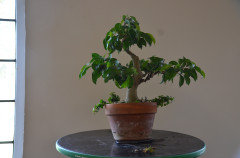
You can probably see the wire holes a bit above the bottom. There are four wires that hold the plant to the pot. I needed those since these pots do not have feet like bonsai pots do. Bonsai pots will have the wires going through the bottom since there is enough clearance because of the feet.Nils
last yearlast modified: last yearHello Al,
thanks again for showing me how to find the remaining parts of your article. It was quite an interesting read! I'm a semi hydroponics guy and mainly grow aroids (Alocasias, Philodendrons and Monsteras). After nearly two years of growing in sh I wanted to try something different with my plants, which is why I was interested in your potting mixes in the first place.
I made small batches of different types of soilless mixes to experiment with and so far am a fan of your gritty mix as I prefer shorter watering intervals when not growing sh.
A big challange for me is figuring out fertilizers. With my sh plants I use an ion exchange fertilizer. I never had to figure out exact ratios and pH, as the fertilizer basically does it for me.
I am having a hard time finding a quality fertilizer that resembles FP; I live in Germany - there's literally only one fertilizer on the market that has water soluble Mg and Ca as an ingredient. Sadly, the NPK ratio is not the best and it does contain urea.
I found another one with a better ratio that doesn't have Mg/Ca included and I'd like to hear your opinion on it if that's ok:
NPK 10,9 - 4,6 - 6,90,01% B
0,004% Cu
0,02% Fe
0,012% Mn
0,001% Mo
0,004% Zn
For the missing Ca/Mg I want to add CalMag 2:1.Tap water pH is 7,66 with an EC of 693.
Now, how should I dilute this fertilzer when watering every 3-5 days (instructions say 5ml/3l, but I figure that's too much for this watering interval)?
Thank you in advance!
Nilsbeccaboo_
last year@jodik I tried searching rode hog kennel but didn’t find anything. Should it be rode dog kennel? I found something under that search.
beccaboo_
last year@tapla Al, I know this is a section for container plants but I want to ask a question specifically about gritty and 511 mixes and if either can be used to help drainage in-ground clay soil? I understand about the funnel effect if the soil around a plant has more air pockets that as water runs off or through the clay soil, it will empty into the path of least resistance being the less dense area. I was curious if there is any other way to use these or other materials within the plant area to create better drainage? Or would I have to overturn and mix in my entire beds? Is there anything you know of that will loosen and break down clay soil? I’ve had very little luck mixing anything over the years but when I do, I try to mound anything that needs better drainage. It has helped but is still tough during long rain spells. What are your suggestions?
tapla (mid-Michigan, USDA z5b-6a) thanked beccaboo_four (9B near 9A)
last year>"very little luck mixing" ___ Mixture could be a better base to raised bed than the mostly clay base.
>"other materials within the plant area" --- Yes, your experience has shown that bed medium has to exclude the clay. Not necessarily gritty nor 5:1:1 (these ideal; there is the cost consideration for such large amount).
tapla (mid-Michigan, USDA z5b-6a) thanked four (9B near 9A)tropicofcancer (6b SW-PA)
last yearlast modified: last year@beccaboo_ Both gritty and 511 are container mixes and designed to provide a good balance of water and air for the roots in containers specifically. Ground is a different beast altogether. Depending on soil type ground can drain well through percolation. That is true for most soil except in extreme circumstances. Improving drainage in heavily clay soil is a daunting task. Trying to add stuff live sand, gravel, etc in not easy either. You would almost need equal amounts, or more, of coarse sand and clay to start seeing a difference. Anything less will not help and can actually make the situation worse.
There is another thread addressing this issue where Al has weighed in. Have a look: https://www.houzz.com/discussions/6318629/planting-citrus-in-heavy-clay-soil#n=62
I have clay soil - not super hardpan clay though. When we bought the house we started building raised beds in sections using topsoil, some compost and the native clay soil. Not particularly high beds, may be 8-12 inches at most. The paths in between was mulched yearly with pine bark, leaf compost. I would say it took more than 5 years to see a difference in the drainage in those paths. We also dug out certain areas of the paths and filled with gravel to catch excess water.
Our yard is not flat but sort of gently slopes away from the house and that helps. Some of the raised beds were deliberately made at right angles to the path of the water flow. Instead of one continuous slope the yard is stepped and each section of about 10-15 feet is flat. All this helps to slow the water flow so it can seep in the ground and carry some of that decomposing mulch into the ground. This was a multi year effort and eventually the effort paid off.
It seems daunting task, but we only did a section at a time. Large sections at a time, not a hole and hole there to plant stuff. That does not help. It creates what is called a bathtub effect. Have a look at the link above to get an idea.
Edit: Added a link above and some minor edits.
tapla (mid-Michigan, USDA z5b-6a) thanked tropicofcancer (6b SW-PA)tropicofcancer (6b SW-PA)
last year@Nils If you are fertigating (that is using fertilizer with every watering) then the rule of thumb is to use 1/4 the recommended strength. That is during growing period. In winter you should use less unless you have a greenhouse. I use 1/4 strength indoors every third or fourth watering. Right now most of my tropicals are inside the house. And they have slowed down considerably. Around March they will start growing again and I will start fertilizing a bit more. Some of my plants are in a high light and warmer area and they will still grow (although slowly) throughout the winter. They get fertilizer (still 1/4 strength) may be every second or third watering.
The fertilizer plus CalMag combo should work if that is all you got. I am surprised that your fertilizer does not have Sulfur (S). Sulfates salts are more common and cheaper. Can you get Protekt? It has K and Si. That way you can boost your K a bit. And Si makes the plant more robust and resilient.
tapla (mid-Michigan, USDA z5b-6a) thanked tropicofcancer (6b SW-PA)Fahmy
last yearWow, this post and the linked ones are full of great information, clearly and patiently explained, many thanks !
I wish I came across this earlier ! I have struggled with poor drainage in potted plants for very very long time, I am planning to prepare some gritty mix for my container plants, I have went through the different posts, read the different ideas and alternatives and combined with what I could easily find around where I live in Europe (south of Germany), I would like to ask if the alternatives below would work well for the 1:1:1 gritty mix and whether one is preferred:
- for the water-holding component the options I found is either Pumice or Seramis granules, Seramis is a type of porous low - temperature treated clay
- Crushed granite seems very hard to find in the right size, instead crushed basalt is available, would that work ? I am concerned that basalt can release minerals in the soil or change the Ph, another option would be coarse quartz/sand (3/16") I have asked around in places selling chicken grit and it seems chicken grit commonly available is either made of quartz, crushed shells or crushed lime, so I guess it should be either crushed basalt or quartz
- pine bark fines are available (2-8mm) which is eq to 5/64" to 5/16"
four (9B near 9A)
last year3/16" good for gritty, high end of recommended range (2.5 - 4.5mm). I think of quartz as glassy; I would want the whole container (not just surface quartz) to be shaded from direct or reflected sunlight.
Fahmy
last yearlast modified: last yearThanks for the prompt response !
I would like to add a question regarding the sphangum peat for the 5:1:1 , the products I found here have a very low ph vaule (2,5-3,5), is this the correct one, or should I look for a more ph neutral peat moss ?
an alternative would be sphagnum moss bricks from the pet store
also
- any opinions on using crushed basalt, and could it cause any issues compared to granite or quartz (sand)
- and it would be great if someone had the chance to compare seramis and pumice and could share their experiences
thanks a lot
JodiK
last yearIn answer to Beccaboo's query above, from a few months ago... search youtube for Rode Hawg Kennel. The proper spelling will get you there. And if you subscribe, which is free, you will get notifications letting you know when we are going live!
I apologize for not getting back to this sooner. I don't spend as much time on my laptop as I used to. We are usually so busy with the farm!
..BillMN-z-2-3-4
last yearlast modified: last yearThanks Al!
Your 5-1-1 was a real 'Game changer' for me.
Everything I used it for (mostly starting from seed and rooted cuttings) exceeded my expectations.
January 4, 2021: Started seed of P. banksiana and T. Occidentalis.
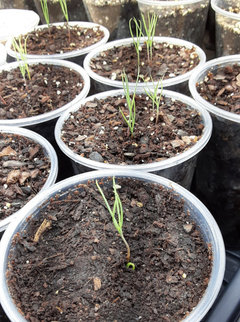
in 2-1/2 weeks, there were roots already to the bottom of the pots.1-22-2021:
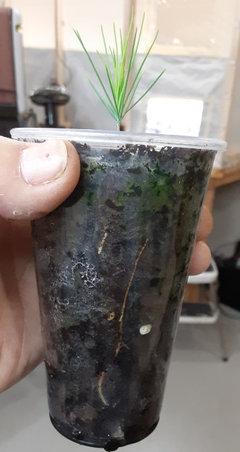
2-20-2021 both plants had very robust root systems:Thuja occidentalis:
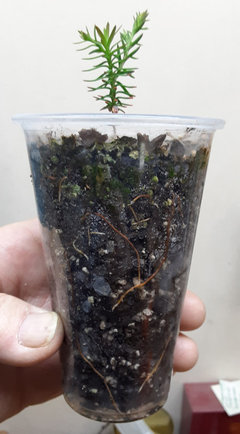
P. banksiana: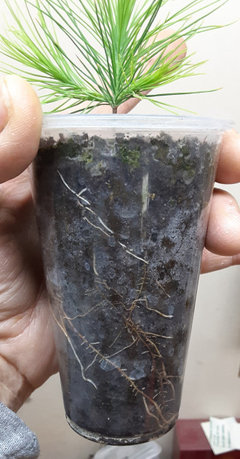
4-22-2021:Plants grew like crazy. These were all in my basement under lights. By the time I gave these to my SIL to plant, end of May, they were twice as tall and packed with roots.
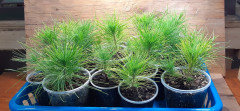
I should've took picture of my rooted cuttings of taxus, the roots were amazing!Here's Picea mariana from seed, I guess from the year before, and one Thuja o. 5-15-2021
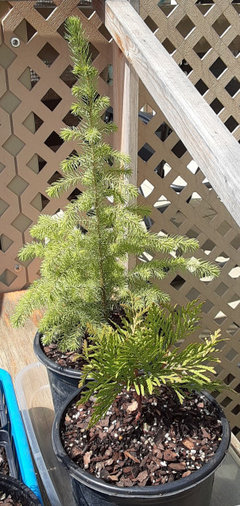
:-)tapla (mid-Michigan, USDA z5b-6a) thanked BillMN-z-2-3-4Ben (Colorado, USDA Z5)
11 months ago@tapla Al, below is the post you wisely suggested I copy/paste into a more relevant thread. Thank you for suggesting this one, which I will also be reading with interest.
“Regarding Turface fines, do I understand correctly that they would be helpful for in-ground trees in flat or otherwise insufficiently drained areas? I do have some trees like that and would love to put the Turface fines to good use.
On the other end of the spectrum, I couldn’t seem to locate uncomposted pine or fir bark fines so I went with the alternative of Repti Bark in 24 qt bags I’ve seen recommended. Only trouble is, at least before screening the average piece size appears to around 1/2”. I avoided SoilPep because it appears to be composted so I assume it would break down too quickly. Will exceeding 3/8” on the bark fines be a big problem for the gritty mix?
Also, do you prefer/recommend gypsum or Foliage Pro 9-3-6 more for trees in pots?
tapla (mid-Michigan, USDA z5b-6a)
Original Author11 months agoRegarding Turface fines, do I understand correctly that they would be helpful for in-ground trees in flat or otherwise insufficiently drained areas? I do have some trees like that and would love to put the Turface fines to good use. It depends on what the soil is like and whether or not they are used in a raised bed. If you have an area with heavy clay and you incorporate them into the soil, they might actually increase the amount of water that collects in the soil surrounding your plants' roots. This is known as the "bathtub effect". Amending a garden where the soil is clay just causes the garden area to hold more water unless the garden is on a slope or there are tiles or a ditch to direct water away from the area. THEN, it can be very helpful.
Whenever there is an area where percolation of water through the soil is slow, amending it in the hope of creating more air space results in an additional measure of water filling the newly created pores until the water naturally percolates through the soil. In the case where they are used in a raised bed (RB), water will move horizontally away from the RB across the top of the clay soil, where it will evaporate much faster than water below the surface of soils not exposed to air movement. When water evaporates from the surface of the surrounding soil, it 'pulls' additional water from RBs via capillary action. That's why clay soils below RBs should not be amended with organic material or sand as it creates thew bathtub effect and holds more water in the amended areas unless there is a plan in place to direct subsurface water away from the area.I couldn’t seem to locate uncomposted pine or fir bark fines ........ Will exceeding 3/8” on the bark fines be a big problem for the gritty mix?
April through Memorial Day is the easiest time of year to find good bark products for making media. I suggest that you should until you find the right ingredients to make either the 5:1:1 mix or the gritty mix; this, because if you 'try to make something work', there is a good chance you'll end up unimpressed and give up. If you get it right the first time, it will be a game changer. Too, once you find a supplier, keep looking for other suppliers. I've found I can always find it somewhere near me, but operations go out of business or might decide to stop carrying a product some of us find very useful. What I'm saying is, it's better to have more than one basket to put your eggs in. I'm on my last bag of fir bark screened 1/8-1/4, so I'll be needing to screen bark again come next spring.
Also, do you prefer/recommend gypsum or Foliage Pro 9-3-6 more for trees in pots? Your fertilizer will dictate what liming agent is appropriate. I always lime the 5:1:1 mix with dolomitic (garden lime) to bring the pH up to a more acceptable level. If I'm using the gritty mix + Foliage-Pro 9-3-6, there is no need to use a liming agent. If I'm using the gritty mix and a fertilizer without calcium or magnesium, I'll use gypsum (CaSO4) as a calcium source and Epsom salts (MgSO4) as a source of magnesium as neither compound has an appreciable effect on pH. Note: I haven't had to supplement Ca/Mg for a long time - since I started using Foliage-Pro 9-3-6. If someone asked me what hort product I would consider to be the most indispensable, it would be the FP 9-3-6.
Al
Ben (Colorado, USDA Z5)
10 months ago@tapla thanks again for all your help on this, Al. Unfortunately I still have not been able to find a supplier for uncomposted pine or fir bark fines in any significant quantities. I have had someone recommend soil pep, which is widely available in large quantities. The problem I see with this is that the variety that is actually available appears to be composted (see picture). Assuming all screening processes are completed, is the only downside with this product that it will break down quickly, necessitating re-potting faster and more or less defeating the intent of the long-lasting gritty mix?
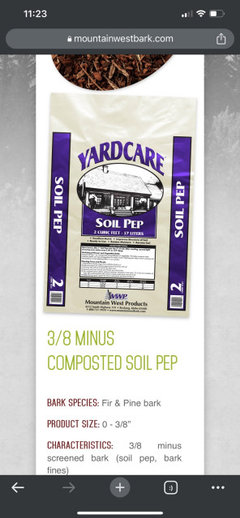
Errata Sama
10 months agoI had that same question, as I mixed a bunch of stuff last year (when prices were much nicer) and have come across it again.
As an ancillary question, is there a way to properly test media that I have created for the properties required?
a1an
10 months ago? I actually don't mind having my bark a bit composted. Seems to not dry out as quick. Right now, I have a mix in a 25 pot that I'm just wetting the medium every now and then (in prep to transplant a JM into this larger container next year).
tapla (mid-Michigan, USDA z5b-6a)
Original Author10 months agolast modified: 10 months ago@Errata Sama As an ancillary question, is there a way to properly test media that I have created for the properties required?
Try this. (Click link)
Al
tapla (mid-Michigan, USDA z5b-6a)
Original Author10 months ago@Ben (Colorado, USDA Z5) Sorry for not replying sooner. All my time recently has been taken up by family, out-state company, and the birthday party we had for my youngest son over the weekend. I'm only just now getting caught up with my regular chores and the replies I owe to fine folks like you.
When I looked into 'soil pep', I found a wide variety of materials covered under the umbrella of that name. Too, one can't depend on an image on the product's packaging as an accurate representation of what's actually in the bag; so unfortunately, I can't really judge what I can't see.
I can tell you the best product for 5:1:1 mix is pine bark in a size from dust to whatever passes a 3/8" screen, with the largest fraction of the material in the 1/8-1/4 size gradient. Also, there should be only a small fraction of sapwood splinters in the bark. It's unlikely you'll be lucky enough to find that exact product, but hopefully you'll find something close enough to work with only a minimal amount of effort on your part. The products (from 3 different suppliers) at 3, 6, 9 o'clock below are about perfect as they are.
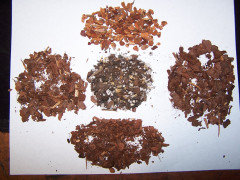
The reason bark is getting hard to find is because it's being contracted to processing facilities/ factories that use it as a substitute for natural gas by heating it to a high temperature and burning the gasses created. Click me for more.
Alwestes Zone 9b California SF Bay
10 months agolast modified: 10 months ago@tapla (mid-Michigan, USDA z5b-6a) In your experience, what should the pH be for Pine bark and for Redwood compost? Back East, I guess they use mostly Pine. Out West, we get mostly Redwood and Douglas Fir.
I am finding that my wholesale suppliers of Redwood compost sell a product that has pH close to 7. I assume they have been pH-adjusting that, but none of the wholesalers seem to understand the products they sell. Maybe the composting process itself is moving the pH to neutral.
If I use a sized Douglas Fir bark - typically a bark targeting Orchid growers - the pH is always under 5.5.
I want to find a composted bark that has a more acidic pH, but maybe such a thing does not exist. I am trying to find a good bark to use as a Rhododendron / Azalea soil, and I am concerned about the bark robbing nitrogen as it ages. I know you have written about this not being such a big problem, but I definitely have some issue with Rhododendrons and Azaleas in container soils made from sized bark. They thrive for a year and then start to look sickly until they are repotted.
Seth
10 months agoTo hop on this pH question, I asked this awhile back but either my post was too long or it was overlooked.
pH - I believe I read previously somewhere using gritty mix pH isn’t a major concern because the medium is intended to not retain water to the point where pH would become a concern? I apologize for oversimplifying what I read. I’m sure pH of solution matters but since the gritty mix is so porous and inert I thought I read the medium pH isn’t an issue?
I would like to grow a Miracle Berry plant which prefers acidic soil but thought because of this it didn't matter.westes Zone 9b California SF Bay
10 months ago@Seth The more basic point is that 5-1-1 formula does a pH adjustment to the soil using dolomite lime. That is likely based on the assumption that the bark is acidic. If you bought a bark compost that was already pH adjusted, you would not need to use the dolomite lime. So having a measurement of the pH in the substrate that you use for 5-1-1 becomes important, no matter what your final application might be.
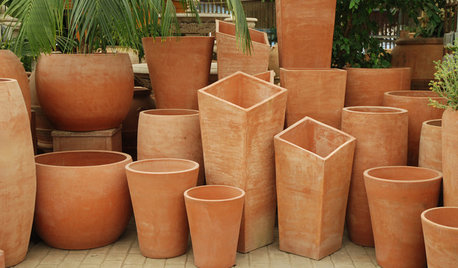
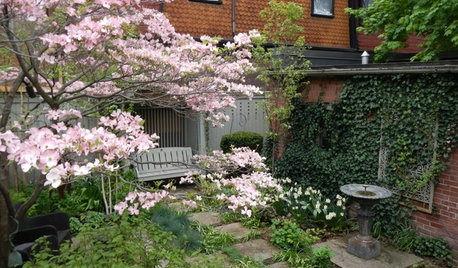
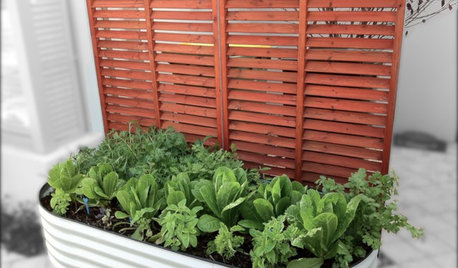
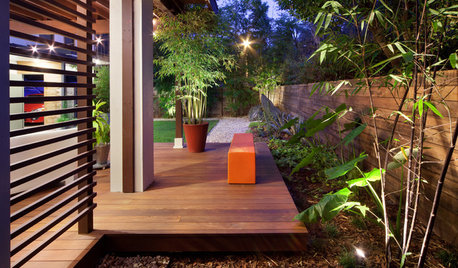
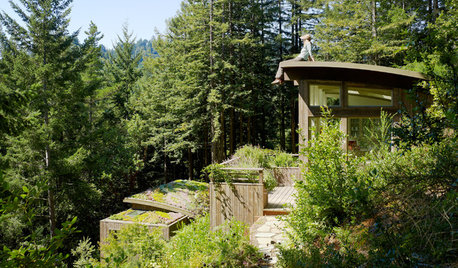
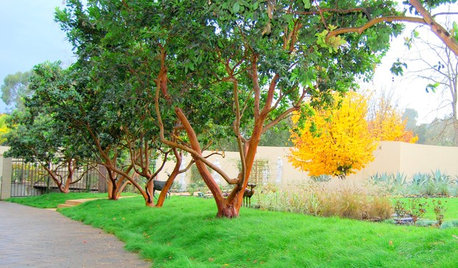
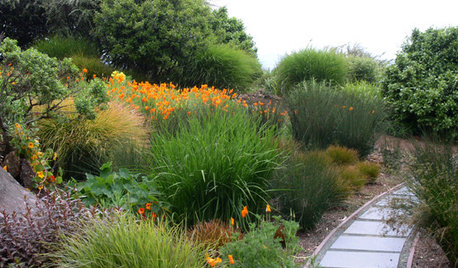
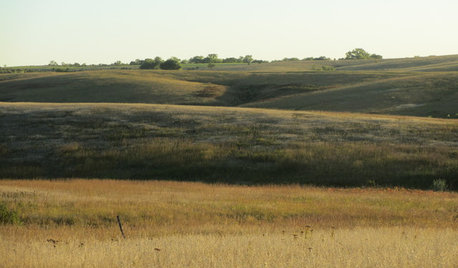
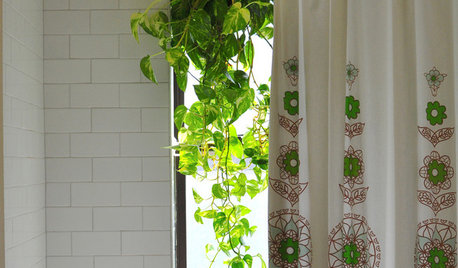
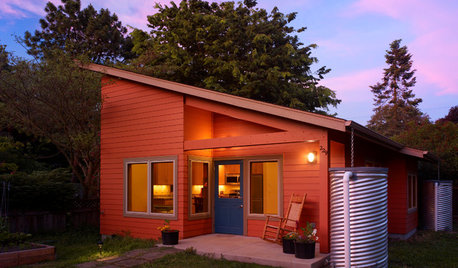



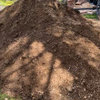
tapla (mid-Michigan, USDA z5b-6a)Original Author